Kafka’s Metamorphosis: 100 thoughts for 100 years
Kafka’s tale of a man who wakes to find he has changed into a giant insect still has the power to shock and delight a century after it was first published. Many regard it as the greatest short story in all literary fiction
Richard T. Kelly
Sat 18 jul 2015
A scene from Metamorphosis at the Linbury studio,
Royal Opera House, in 2011.
Photograph: Tristram Kenton/Guardian
1. What need a modern reader know of Franz Kafka’s Metamorphosis (Die Verwandlung) – arguably the most famous, also greatest, short story in the history of literary fiction?
2. Of its stature, for example, Elias Canetti wrote that the story was something Kafka “could never surpass, because there is nothing which Metamorphosis could be surpassed by”. As endorsements go, the bar could not be set higher.
3. Kafka’s place in the literary pantheon has been assured for some time, most pleasingly expressed by George Steiner’s suggestion that he is the only author of whom it may be said that he made his own a letter of the alphabet – K.
4. Here, though, is a little novelty: in 2015, Metamorphosis is 100 years old. At least, 1915 is when the story was published, which is to say “finished”; and Kafka, famously, didn’t finish very much.
5. Kafka worked on Metamorphosis through the autumn of 1912 and completed a version on 7 December that year. But negotiations with publishers were complicated, and circumstances – the first world war, among other things – intervened.
6. Finally Metamorphosis was set before readers in October 1915, in the avant-garde monthly Die Weissen Blätter, then put between covers that December.
7. A century on, why does Metamorphosis still attract readers? One reason is that it’s a horror story of sorts. Its premise – a man awakens in the body of an insect – exerts a ghastly fascination beyond anything in even the consummate short works of Chekhov or Joyce or Alice Munro.
8. Another is that it is, amid its pathos, awfully funny. Gregor Samsa wakes to discover he has six legs and a shell, yet for some pages he thinks that what ails him might just be the kind of throat complaint that is “the occupational malady of travellers”. What can you do but laugh?
9. And there’s more. As Gregor struggles to crawl off his bed, a clerk from his company calls at the Samsa apartment. As Vladimir Nabokov commented: “This grim speed in checking a remiss employee has all the qualities of a bad dream.” But it is also farce: a personal embarrassment raised to a debacle by multiple easily shocked persons arriving on the scene to witness it.
10. Metamorphosis exemplifies the world Kafka invented on paper – recognisable but not quite real, precisely detailed and yet dreamlike.
11. We call this world “Kafkaesque”, of course, while keeping mindful of Italo Calvino’s lament that one hears that term “every quarter of an hour, applied indiscriminately”.
12. I’ll venture we mean “Kafkaesque” to denote a sense of suddenly inhabiting a world in which one’s customary habits of thought and behaviour are confounded and made hopeless.
13. To dig a little deeper, the term evokes an individual’s sense of finding himself victimised by large impersonal forces, feeling after a while that he can’t but take it personally – and feeling haunted, too, by the sense that maybe, after all, he deserves it.
14. If you grant the preceding, then Metamorphosis is perhaps the quintessential Kafka story.
15. Given how well the story has aged, it is telling that Kafka at first didn’t wholly delight in his handiwork. Even as he inspected the proofs he was unpersuaded. (“Unreadable ending. Imperfect almost to its very marrow.”)
16. But the very fact that Metamorphosis was read, chuckled over and frowned on while Kafka was alive may bear repeating; for the myth rather persists that Kafka was unknown and unpublished in his lifetime.
17. Though his great fame was posthumous, he did have a reputation to speak of while he was alive. If a minor figure, he nonetheless had a better class of admirer (eg, Robert Musil).
18. In 1915 the dramatist Carl Sternheim, winner of the prestigious Theodor Fontane prize, bestowed his prize money on Kafka as a mark of writer-to-writer respect.
19. (Can you imagine the Man Booker prizewinner of 2015 declaring from the dais that s/he plans to hand over the £50,000 to a rival novelist whose stuff s/he considers so much better?)
20. Legendarily, though, Kafka had no bigger fan than his university friend Max Brod, who decided early on that Kafka was a genius, and duly ended up saving his works from incineration.
21. Kafka’s famous literary death wish, delivered to Brod, was: “Dearest Max, my final request: Everything I leave behind in the way of diaries, manuscripts, letters, from others and my own, sketches, and so forth, to be burned completely and unread … ”
22. Brod disobeyed Kafka, claiming that his friend had intimated his wish some years earlier, whereupon Brod had made it clear he would do no such thing. In other words, we may infer that Kafka was playing hard to get.
23. Kafka did, however, stipulate that a few works were to be spared: “The Judgment, The Stoker, Metamorphosis, Penal Colony, Country Doctor, and the short story “A Hunger Artist” … since they do exist, I do not wish to hinder anyone who may want to, from keeping them.” Certainly these are stories one would call keepers.
24. Let’s look again, then, at the setup of Metamorphosis: Gregor Samsa is a travelling salesman in cloth, who works to support his family – mother, father, younger sister – and lives with them in a flat in an apartment house, though frequent business trips mean he is rarely there.
25. Why does Gregor work so hard? Five years ago his father lost a lot of money and Gregor took a job with one of the creditors. His sister Grete was too young to work, his mother too poorly with asthma, his father rather a broken man. Gregor, then, is the man of the house: his wages keep the family. As the story begins he has, for a change, slept overnight in the flat. And then he awakens.
26. Horror, humour, the trappings of the workaday, the surrealism of dreams – all are present from the first sentence, which in German goes like this: “Als Gregor Samsa eines Morgens aus unruhigen Träumen erwachte, fand er sich in seinem Bett zu einem ungeheuren Ungeziefer verwandelt.”
27. No English translation disputes that Gregor wakes from troubled dreams to find himself transformed in his bed. But into what, precisely?
28. The adjective ungeheuren means “huge”, the noun Ungeziefer some form of “creepy-crawly” but also “vermin” – obviously more suggestive of rodents than insects, yet applicable to both, the shared characteristic being pestilent, repugnant qualities.
29. “Some kind of monstrous vermin” is how it was rendered by the story’s first English translator, AL Lloyd. “A gigantic insect” was the reading of Edwin and Willa Muir. “A monstrous cockroach” is how Michael Hofmann phrased it more recently.
30. Nabokov, who taught Kafka’s work with great ardour at Cornell University, was a passionate lepidopterist and put some care into classifying Kafka’s Ungeziefer, noting its “numerous little legs”, brown colouring and convexity of belly and back.
31. In a deduction worthy of Sherlock Holmes, Nabokov also observed that the creature’s use of “strong mandibles” for the purpose of turning a key in a lock while on its hind legs “gives us the length of his body, which is about three feet”. But this is mere dressing on Nabokov’s conclusion: namely that Gregor becomes “a big beetle”.
32. Both Kafka and Brod when discussing the story spoke freely of the “bug” (wanze). But Kafka wished for readers to approach his creation with rather more tact. In his 1915 correspondence with Kurt Wolff he expressed alarm (“Not that, please not that!”) at the thought that the book’s cover might bear a drawing of an insect.
33. It’s not a great stretch to propose that in his concern for how Ungeziefer Gregor was perceived, Kafka was revealing an identification with his protagonist – quite a thing, when you think about it.
34. Metamorphosis is a story in which a man suffers a terrible and inexplicable misfortune, is reduced to an abject and alien state, then is made to suffer doubly by the attitude of his ostensible loved ones, who make clear they would be better off without him – a verdict that he, with a passivity that seems culpable, accepts.
35. Not for nothing did Saul Friedländer entitle his 2013 study Kafka: Poet of Shame and Guilt.
36. Neurotic misery informed Kafka’s work just as it is the making of many a writer, but in his case the degree to which the pain appears willed – that he felt it could be no other way and probably ought to be so – makes for a significant variation.
37. There’s something a little chilling in the way he could step aside from himself, perceive his own plight, then twist it with finesse into fictional shapes that had the force of parables.
38. To live the writing life, Kafka decided early on, was to be in “the service of the Devil”. He struck this Faustian pact, knowing it was not in his favour (it never is), but that it would suffice. Writing was everything, though it couldn’t be enough, and in consequence he would cut himself off from real intimacy with any other person.
39. Certainly Kafka had what we nowadays call commitment issues with women. The degree to which he was interested in them as sexual partners is the riddle of the sphinx, one we must leave to his biographers, who don’t entirely agree.
40. It’s noteworthy, then, that Metamorphosis has a kinship with other titles in that elite group saved from the flames, Kafka having composed them during an inspired period of months in 1912 when, undoubtedly, a woman was involved.
41. By day, Kafka was an insurance man specialising in workers’ injury claims. If he saw this job as a writer’s wage slavery, nonetheless he did it for years, conscientiously.
42. By 1911 he was working – unfruitfully, he felt – on a novel with an American theme entitled The Man Who Disappeared / Der Verschollene. (It became Amerika.)
43. Worse, during 1911 he was much beset by having agreed to help his father with an interest in an asbestos factory – an investment Kafka had encouraged him to make, resulting in hassles and unhappiness.
44. But in August 1912, at Brod’s place in Prague, Kafka met Felice Bauer. Felice was 24, a cousin of Brod’s brother-in-law, and visiting from Berlin where she worked as a secretary for a firm making Dictaphones. Kafka was instantly drawn to her and began to woo her with a daily torrent of letters.
45. There is, of course, an obvious distancing effect in epistolary courtship, and Kafka could be promiscuous even with those disembodied affections.
46. Hanif Kureishi has observed wryly that Kafka “became very good at maddening, denying and provoking women. He also went to enormous trouble to ensure that none of the women engaged with him was ever happy or satisfied.”
47. Kafka saw Felice as “a happy, healthy, self-confident girl”. She was perhaps cheerier than our now standard image of aKafka fan. In fact, she wasn’t madly keen on his writing. But she did seem to have an invigorating effect on his productivity.
48. During the early months of their romance he wrote The Judgment and Metamorphosis. The former was dedicated to Felice.
49. On 17 November 1912 he wrote to Felice, confiding that he had been bedridden with misery over the fitful progess of Der Verschollene when suddenly another story idea occurred to him (“and oppressed me with inmost intensity”).
50. Work soon gathered pace. On 23 November he advised Felice with a strange but typical air of tease that his new story was “a little bit dreadful”.
51. The following day, a Sunday, he read the first part of his Die Verwandlung aloud to his friends and they laughed keenly. He must have known then that he had something.
52. Though Kafka further told Felice the piece was “extremely repulsive” and “nauseating”, he professed himself “not unhappy with it”. He even assured her his creative process was a boon to their relationship – “perhaps as much as I write and free myself, purer and worthier of you I will become.”
53. Reviewing this correspondence, it seems that some part of Kafka desired to make a show of his stigmata; and not – whatever his protestations – because that effort was so very self-abnegating but, rather, because he took an artist’s pride in the distinguished originality of his wounds.
54. Kafka’s friend Franz Werfel recommended Die Verwandlung to Wolff in March 1913. Wolff recommended it in turn to Franz Blei, literary editor of Die Weissen Blätter. Musil wanted to see it for his magazine Die Neue Rundschau but that came to naught.
55. The year 1913 was nonetheless a good one for Kafka’s output: The Judgment and The Stoker (the first chapter of what had become Amerika) were published.
56. Kafka became engaged to Felice in April 1914, but broke it off in July. The bonds of marriage appealed to him only in theory.
57. Then came the war. Kafka was spared military service as an “indispensable worker”. But his brother-in-law fought, and what he told Kafka of trench warfare possibly inspired In the Penal Colony, which got Kafka back into a productive groove. The Trial, too, was drafted largely in 1914-15.
58. From this promising point in his authorial career, did Kafka power forward? He did not. By 1916 the writing had gone adrift. He took leave from his insurance job, to no great avail. He and Felice reconciled and were engaged again in July 1917.
59. At 4am on 11 August 1917 Kafka woke abruptly and started coughing blood. On 4 September doctors diagnosed tuberculosis.
60. Kafka observed his predicament carefully and to a friend he declared it to be fate: “… it is a just blow, which, incidentally, I do not feel at all as a blow, but as something quite sweet in comparison with the average course of the past years … ”
61. The diagnosis was by no means the end of Kafka’s writing, yet from this moment until the end he carried a burden, like a hard shell on his back. Tuberculosis was a project to which he was condemned, and this confinement he experienced as being, somehow, set free.
62. In December 1917 he broke with Felice for the second and decisive time. She got over it, and married another man a year later.
63. Sickness and solitude could easily break a writer, but then Kafka didn’t write for common-coin reasons: not to delight himself, or to make a living, or impress the opposite sex.
64. Why did he write? In the famous “Letter to his Father” – gouged out of himself during a supposed vacation in the mountain village of Schelesen in November 1919, but never sent – he dedicated his entire oeuvre to the man who sired him: “My writing was about you; in it, I merely lamented what I was unable to lament at your breast.”
65. Hermann Kafka, ex-serviceman and purveyor of fancy goods, was the strapping son of a butcher. Hermann and his wife Julie conceived five further children after Franz was born in 1883, though two died young, leaving Franz as the sole boy with three sisters. Hermann did no obvious wrong to anyone, and yet literary history holds a strong image of him as the great oppressor in Franz’s life.
66. As Alan Bennett, author of the play Kafka’s Dick, notes: “Hermann Kafka has had such a consistently bad press that it’s hard not to feel a sneaking sympathy for him as for all the Parents of Art. They never get it right.”
67. Kureishi, meanwhile, has ranked the “character” of Hermann as “probably one of [Kafka’s] best literary creations or fictions”.
68. The “Letter” is a flabbergasting list of grievances regarding the many and various “orbits of influence” Franz believed Hermann to have exerted against him, and his own “struggle” to resist.
69. And yet the “Letter” is also replete with notes of trapped, thwarted regard. Franz professes to have felt himself “a miserable specimen” next to his dad – “not only in your eyes but in the eyes of the whole world, for you were for me the measure of all things”.
70. The harder recriminatory strain, though, leads to invective: “You have put it into your head to live entirely off me. And there is the combat of vermin, which not only sting but, on top of it, suck your blood in order to sustain their own life. That’s what the real professional soldier is; and that’s what you are. You are unfit for life … ”
71. With the charge of parasitical behaviour, and the wince-making evocation of “vermin”, we are carried back into the world of Metamorphosis.
72. In the story, Gregor, having gradually accepted his insect state as irreversible, then attempts to adapt the good efforts he customarily makes on behalf of his family, and – while he succumbs to a degree of self-pity – is rather ashamed of himself.
73. How do the Samsa family members adapt themselves to Gregor? The film-maker David Cronenberg, in his introduction to Susan Bernofsky’s 2012 translation, puts it eloquently: “It never occurs to them that, for example, a giant beetle has eaten Gregor; they don’t have the imagination.” Rather, in a thoroughly bourgeois manner, the Samsas see Gregor’s plight as “an unfortunate natural family occurrence with which one must reluctantly contend”.
74. A great and terrible moment comes when Gregor’s sister argues vehemently that the “monster” in Gregor’s room cannot possibly be Gregor – that its pestilent presence in the Samsa home is proof of its inhumanity. Gregor remains sufficiently human to hear those words and to feel them, and his response provides the story’s climax.
75. Some of the most distinguished writers to have written on Kafka have taken the view that Gregor is a suffering saint, and his family a collection of monsters.
76. “Gregor”, Nabokov told his students with maximum moral punch, “is a human being in an insect’s disguise; his family are insects disguised as people”.
77. In the essay on Kafka in his Illuminations, Walter Benjamin observes how “the fathers in Kafka’s strange families batten on their sons, lying on top of them like giant parasites”.
78. During the Marxist analysis of the “Notes on Kafka” in Prisms, Theodor Adorno comments feelingly on how often in this writer’s work “the parasitic moment is displaced. Gregor Samsa, not his father, becomes the bug”.
79. What Adorno doesn’t address is the degree to which Kafka was displacing through fiction a sense of parasitism that he saw in his own reflection, the “miserable specimen” in the mirror.
80. The dating of the never-sent “Letter to his Father” is noteworthy, too – ie not long after Kafka had conducted another of his hopeless courtships, with a dressmaker from Prague named Julie Wohryzek. Kafka proposed to her in the summer of 1919. Hermann thought the match ill-advised, half-baked, beneath his son’s station. Unsurprisingly, the marriage didn’t happen, ostensibly because the couple couldn’t find a place to live.
81. But the reason Kafka gives to Hermann is that he is “mentally incapable of marrying”, marriage being “your [Hermann’s] very own domain”. In other words, Kafka felt Hermann had already deformed him irreparably in the sexual-romantic department.
82. There were two further notable romances in Kafka’s life: a largely epistolary affair with the gifted translator Milena Jesenská-Pollak, who was unhappily married and therefore unattainable – unless, that is, both she and Kafka had been prepared to do something about it.
83. Then came Dora Diamant, 19 years old when Kafka met her at the seaside resort of Müritz in 1923. Within a few weeks the two were planning a future, contemplating a fresh start in Berlin, or Tel Aviv. In fact, the unassuming Dora became Kafka’s companion unto death.
84. Philip Roth, who taught Kafka’s works at the University of Pennsylvania (and who published The Breast in homage to Metamorphosis) once wrote a part-essay/part-imagining called “‘I Always Wanted You to Admire My Fasting’, or, Looking at Kafka” – in which a pretend-Kafka survives TB and moves to settle in Newark as a Hebrew schoolteacher (where he instructs a young “Philip Roth”.) But if that was Roth’s dream, it doesn’t approximate to anything Kafka appeared to fancy for himself.
85. In a letter of July 1922, Kafka told Brod that he feared death in part because he had never lived, but that there was both an upside to that and a down: “What I have toyed with is really going to happen. I have not bought myself off by my writing. I died my whole life long and now I will really die. My life was sweeter than other people’s and my death will be all the more terrible.”
86. Kafka “toyed” with death to the extent that his great writings may be seen as a sort of highly imaginative rehearsal for the end of all things: little suicides, if you like. Metamorphosis is the most vivid – the saddest, most ghastly and unforgettable – of them all.
87. By the middle of 1924 his health was so poor he had to move back in with Hermann and Julie. He was suffering from agonising tubercular lesions, and the pain of swallowing left him ever more parched and starved. At noon on 3 June 1924, he died. He was 40.
88. The Scottish poet-translator Edwin Muir and his wife Willa gave English readers the Kafka they knew and loved for decades. Metamorphosis, though, was first rendered in English by Eugene Jolas across three issues of the journal Transitions from 1936 to 1938.
89. However, the first single-volume English translation dates from 1937 and was by AL Lloyd, the folk musicologist, singer, arranger and author.
90. Lately, through newer translations, English readers have got to know Kafka over again. It is widely felt that the Muirs were over-fussy, distorting what Stanley Corngold has called the “luminous plainness in Kafka’s prose”.
91. Great books are, of course, often translated into dramas, even though a literary masterpiece has, by definition, already found its perfect form. Steven Berkoff’s movement-centred staging of Metamorphosis allowed a succession of gifted performers to contort their bodies into the mutated shape of Gregor Samsa: first, Berkoff himself in 1969, later, Brad Davis (1982), Tim Roth (1986), Roman Polanski (1988), and, on Broadway in 1989, Mikhail Baryshnikov.
92. One might wonder how Cronenberg would adapt Metamorphosis for cinema, except that his The Fly (1986) gives a decent idea. That film’s protagonist does not wake to find himself an insect but, rather, mutates into a hybrid form over a period of weeks, during which – just as Nabokov says of Gregor – “his human impressions still mingle with his new insect instincts”.
93. Kafka composed a notable number of stories from the perspective of creatures: “Investigations of a Dog”, “A Report to an Academy”, “Josephine the Singer”, “The Burrow”. It’s as if he were saying: “You’re in the body you’re in, it makes the problems it makes, the soul cries out regardless.”
94. My First Kafka: Runaways, Rodents and Giant Bugs (2013) is a book for children in which Matthue Roth retells Metamorphosis, with drawings by Rohan Daniel Eason. It’s a fine idea, playing to the seemingly irreducible anthropomorphic bent of literature aimed at kids.
95. But that’s not to say Kafka’s original can’t work for younger readers. Last summer I had my old Penguin Kafka with me by the pool during a shared family holiday, and at one point a nine-year-old friend of my daughter picked up the book and began to question me about it. The next time I looked, the book was gone.
96. Could there ever be another Kafka? If he were living today in our age of instant publishing, neglected book mountains and 24-hour multimedia (self-)promotion, do you suppose he could get a start in the writing game?
97. One would hope so, but it’s not a business for overly retiring types, not ideal for one who reviewed his life’s work and concluded that the bulk of it ought to be consumed by fire.
98. On the one hand, it’s hard to imagine Kafka on Twitter, yet undeniably he had a gift for aphorism. “In the struggle between yourself and the world, back the world” – that’s 62 characters right there.
99. Social media could have fitted Kafka like a glove, or a skin, or a hard shell. His reticence and enigma might have made him, counterintuitively, a deeply marketable author.
100. Can we imagine, then, in 2015, that the greatest fabulist of our times might be a resolutely single if not “undateable” solitary, glumly tied to the parental home, trapped doing unglamorous office work, and tapping away after dark at literary efforts that he cannot ever quite complete or sign off? It doesn’t seem quite plausible, or desirable, perhaps. But that, more or less, is the story of Kafka, and why we are able to treasure what is indeed the most famous, also greatest, short story in the history of literary fiction.
• This is an edited version of Richard T Kelly’s preface to the 2015 edition of Metamorphosis by Franz Kafka (translated by AL Lloyd), published by Faber Finds.


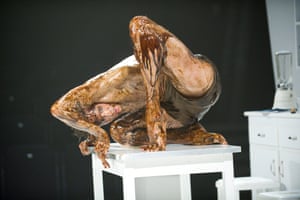

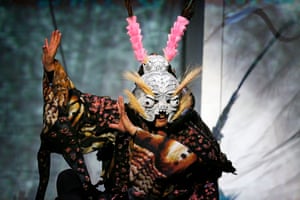
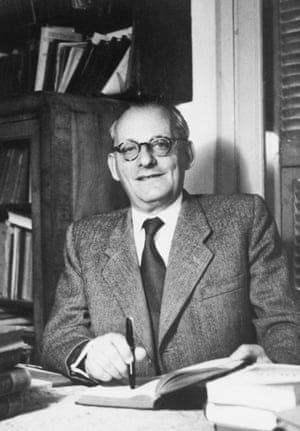
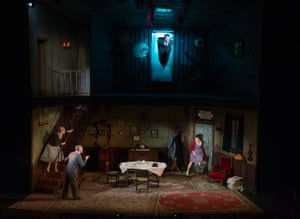
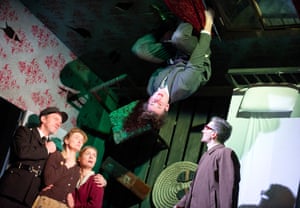

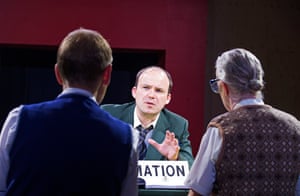
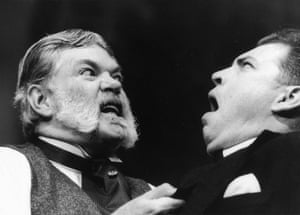
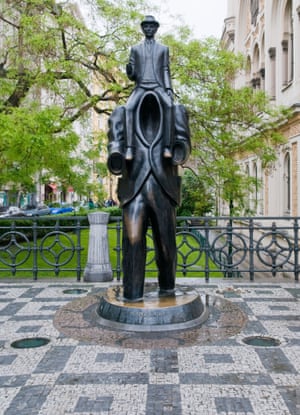
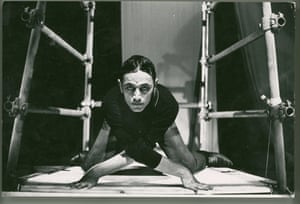

pilule bruleur de graisse homme
ReplyDeletebruler graisse ventre homme
Le meilleur bruleur de graisse
Bruleur de graisse pour homme
Bruleur de graisse nutrition
Bruler la graisse du ventre
pilule absorbe graisse
brule graisse ventre
Legume brule graisse ventre